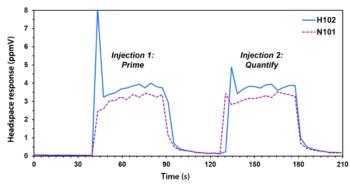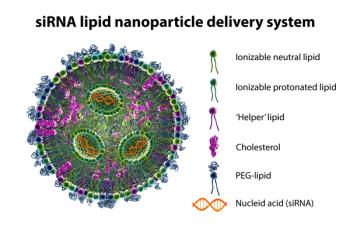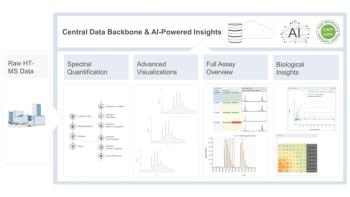
- April 2024
- Volume 20
- Issue 4
- Pages: 5
GC–TOF-MS Finds >250 Volatile Compounds in E-Cigarette Liquids
A study has used gas chromatography coupled to a time-of-flight mass spectrometer to build an electron ionization mass spectra database of more than 250 chemicals classified as either volatile or semi-volatile compounds. An additional, confirmatory layer of liquid chromatography–mass spectrometry analysis was subsequently performed.
A study in the Journal of Chromatography A used gas chromatography coupled to a time-of-flight mass spectrometer (GC–TOF-MS) to build an electron ionization mass spectra (EI-MS) database of more than 250 chemicals classified as either volatile or semi-volatile compounds (1). An additional, confirmatory layer of liquid chromatography–mass spectrometry (LC–MS) analysis was subsequently performed.
This report out of the Universidade de Santiago de Compostela, Spain, aimed to improve upon gas chromatography–mass spectrometry (GC–MS) detection considered the popular standard for analysis of “e-liquids” (1). The authors said both LC–MS and nuclear magnetic resonance (NMR) spectroscopy have been proposed for determination, but that only approximately 140 volatile compounds were previously identified.
Certain compounds produced by tobacco combustion in conventional cigarettes are not present in e-cigarettes, burnishing their reputation as a “safe” alternative (1). But the researchers list factors and symptoms indicating lung issues in consumers, from flavors that may cause oxidative stress to reactions between carbonyls and alcohols producing acetals, known respiratory irritants. Other addictive substances can be found in electronic smoking devices, such as nicotine and cannabinoids.
The research team sought a nontargeted approach, analyzing the e-liquids using two capillary columns with different polarities (1). The complementary LC–MS analysis was reserved for compounds identified at the highest of three levels of confidence, having satisfied three identification criteria. Study results showed while concentration ratios between delta-9-tetrahydrocannabinol (Δ9-THC) and cannabidiol (CBD) in e-liquids fell into a relatively narrow range (between 0.02% and 0.3%), the ratio of propylene glycol acetals to parent aldehydes ranged from 2%, for ethyl vanillin, to upwards of 80% for benzaldehyde.
Reference
(1) Cobo Golpe, M.; Ramil, M.; Rodríguez, I. Comprehensive Characterization of Volatile and Semi-Volatile Compounds in E-Liquids for Electronic Cigarette Using Gas Chromatography Accurate Mass Spectrometry. J. Chromatogr. A 2023, 1703, 464114. DOI:
Articles in this issue
over 1 year ago
Monitoring PFAS in Aquatic Environmentsover 1 year ago
Rising Stars of Separation Science: David Steinerover 1 year ago
The 26th Norwegian Symposium on Chromatographyover 1 year ago
EuSP2024 and GSAC2024 Previewover 1 year ago
Element Launches New Pharmaceutical Testing ServiceNewsletter
Join the global community of analytical scientists who trust LCGC for insights on the latest techniques, trends, and expert solutions in chromatography.





